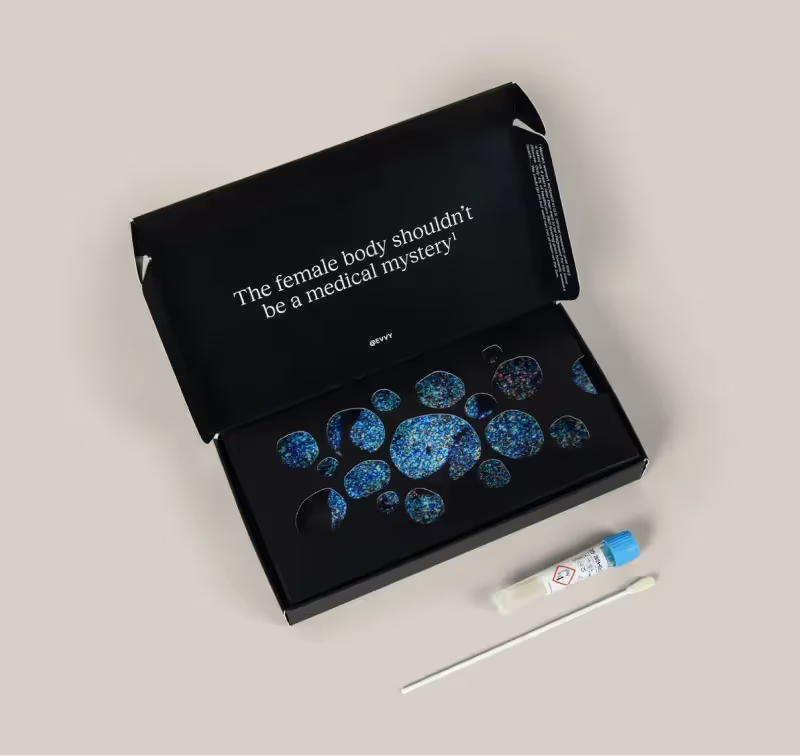

Can STIs Cause PID?
Curious if an STI can cause PID? Learn about the link between STIs and pelvic inflammatory disease (PID) and how to protect your health.
Words by Monica Karpinski
Scientifically edited by Dana Alloy
Medically reviewed by Dr. Christine Vo, MD
You had sex with a new partner a few months ago and now have some unusual discharge and pelvic pain that doesn’t seem to be going away. So, what’s going on?
It’s possible that you caught a sexually transmitted infection (STI) from this partner which has developed into pelvic inflammatory disease (PID).
What is pelvic inflammatory disease (PID)?
PID is an infection of the female reproductive system, typically caused by sexually transmitted bacteria spreading from the vagina to the upper genital tract (uterus, fallopian tubes, or ovaries). It affects around 4.4% of sexually active women.
If pelvic inflammatory disease is left untreated, it can cause long-term complications, such as:
- damage to the endometrium, fallopian tubes, and ovaries
- chronic pelvic pain and chronic pain
- Infertility
- ectopic pregnancy (when the embryo implants outside of the womb)
- scar tissue formation inside the fallopian tubes
- sepsis, requiring hospitalization.
We know this sounds scary and serious — it’s important to remember that not everyone with a sexually transmitted infection will get pelvic inflammatory disease, but the former does increase the risk of the latter, so it’s best to understand the risks and get tested regularly.
.jpeg)
What’s the link between PID and STIs?
Pelvic inflammatory disease can develop when the internal surface of the womb (called the endometrium) is damaged, allowing pathogens to ascend into the upper reproductive organs (uterus, fallopian tubes, and ovaries) via the cervix.
Sexually transmitted diseases like chlamydia and gonorrhea can cause this damage. A relationship between bacterial vaginosis (BV) and pelvic inflammatory disease has also been shown, but more research is needed.
It’s still unclear why some people with sexually transmitted infections get pelvic inflammatory disease and some don’t, but some risk factors include:
- being at a younger age when you first had sex
- having multiple sexual partners
- having female sex partners
- having a history of sexually transmitted infections.
Sexually transmitted infections are treatable and preventable, so it’s important to get tested regularly — in addition to practicing safe sex — to help prevent any infection from progressing into pelvic inflammatory disease. This is true even if you feel fine! Many people with STIs have no symptoms at all. You can get an STI test at your healthcare provider’s office,or a local sexual health clinic, or you can take an at-home STI test.
If diagnosed with PID, it is crucial to inform your sex partner so they can also take antibiotics to prevent reinfection. Both partners should get treated to avoid complications such as infertility and chronic pelvic pain.

Recurrent symptoms? Get Evvy's at-home vaginal microbiome test, designed by leading OB-GYNs.
Which STIs cause PID?
Chlamydia
Chlamydia is an incredibly common sexually transmitted disease caused by the bacteria Chlamydia trachomatis. It’s important to note that research shows around 70% of people with chlamydia won’t have any symptoms.
If chlamydia isn’t treated, C.trachomatis can travel from the cervix into the upper reproductive tract and cause pelvic inflammatory disease.
However, having chlamydia is not a guarantee for developing pelvic inflammatory disease but it's estimated that about 14% of people with chlamydia will go on to develop PID. Some research suggests that people with asymptomatic chlamydia are less likely to develop it. Nevertheless, given the potential consequences of pelvic inflammatory disease, STI testing is highly recommended.
Gonorrhea
Gonorrhea is caused by the bacteria Neisseria gonorrhoeae and is one of the top causes of pelvic inflammatory disease along with chlamydia. Interestingly (or not so fun fact), these two conditions are also the most commonly reported bacterial STIs in the U.S.
Having gonorrhea doesn't mean that you will definitely develop PID. However, people with gonorrhea are more than four times more likely than those without it to develop PID. Moreover, according to some studies, pelvic inflammatory disease that follows gonorrhea can bring on more severe symptoms.
Around half of those who have gonorrhea won’t have any symptoms at all, making it tricky to know whether you have the infection (and the higher risk of pelvic inflammatory disease that comes with it). The best defense we currently have is practicing safe sex, receiving regular STI screenings, and treating any infections that are acquired as soon as possible.
Trichomoniasis
It may be less well-known than its peers, but trichomoniasis, commonly referred to as “trich” is actually the most common, curable sexually transmitted infection. It’s caused by a parasite called Trichomonas vaginalis, which can be passed from one person to another during sex and bring on infection by entering into the lower genital tract.
When it’s left untreated, it can enter into the upper urinary tract and — you guessed it — play a role in pelvic inflammatory disease. While there is a clear association between trichomoniasis and pelvic inflammatory disease, there is limited evidence for fully understanding the connection between the two.
According to one study, T. vaginalis was present in around 13% of folks with pelvic inflammatory disease. Plus, people with trichomoniasis were twice as likely to have endometritis, a condition where the lining of the womb gets inflamed and irritated, which is linked to PID.
We probably sound like a broken record at this point, but only about 30% of people with trichomoniasis will have any symptoms, so it really is important that you get screened for STIs regularly.
Mycoplasma genitalium
First discovered in the 1980s, Mycoplasma genitalium is a type of bacteria that we’re still learning about but has been recognized as an emerging sexually transmitted pathogen. It’s associated with a range of diseases, including cervicitis, infertility, and pelvic inflammatory disease.
One study of 682 women found that 31% of those who tested positive for M. genitalium went on to develop PID, while the Center for Disease Control and Prevention (CDC) estimates that those who do test positive are twice as likely to get pelvic inflammatory disease than those who don’t. However, we still don’t know a lot about M. genitalium — the CDC adds that there isn’t enough data to show that treating M.genitalium can prevent PID.
How do I know if I have pelvic inflammatory disease?
It’s not always straightforward to figure out whether you have pelvic inflammatory disease. For one, many people who have it don’t have any symptoms at all — meaning that you have to get tested to know if you do.
If you do have symptoms, they could be anything from mild to severe and can be general. Some common symptoms of pelvic inflammatory disease include:
- Pelvic pain
- Unusual vaginal discharge that might be yellow, green, or have a foul smell
- Fever
- Painful sex
- Pain while peeing
- Unusual bleeding.
Unfortunately, it's quite difficult to diagnose PID as there is no “gold standard” diagnostic criteria. Diagnosing pelvic inflammatory disease includes a physical exam to look for signs of infection, and testing for any of the pathogens mentioned above. On the plus side, pelvic inflammatory disease is entirely preventable with early detection and treatment of STIs, and diagnosing and treating STIs is a very simple and well-defined process.
When it comes to your body, we believe that the best defense is a good offense, and Evvy’s Vaginal Health and STI Test can help you better understand which types of bacteria are present within your vaginal environment — including ones that cause STIs.
While only a doctor can diagnose you, Evvy’s test can give you some useful clues as to what might be going on down there and pick up on any potentially harmful bacteria before PID fully develops.
FAQ
What type of infection causes PID?
Pelvic inflammatory disease (PID) is most commonly caused by sexually transmitted diseases, particularly chlamydia and gonorrhea. These bacteria can travel from the vagina and cervix up to the upper reproductive orgasms, leading to inflammation and infection of the uterus, fallopian tubes, and ovaries. In some cases, other types of normal bacteria present in the vagina can also cause pelvic inflammatory disease, such as those linked to bacterial vaginosis. Early diagnosis and treatment of STIs are crucial in preventing the development of pelvic inflammatory disease and its associated complications.
Can PID be passed to a man?
No, pelvic inflammatory disease can't be passed from a woman to a man. That said, the bacteria that cause PID, like chlamydia and gonorrhea, can be passed on during unprotected sex and can affect both men and women. Men who get these infections might notice symptoms like urethritis, epididymitis, or prostatitis. To stop these infections from spreading and lower the chance of complications, both partners need to get tested and treated if needed. Using barrier methods like condoms and dental dams can really help reduce the spread of these bacteria.



.avif)

